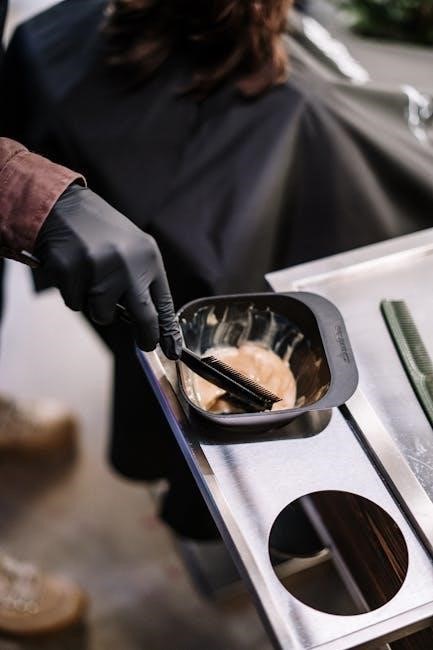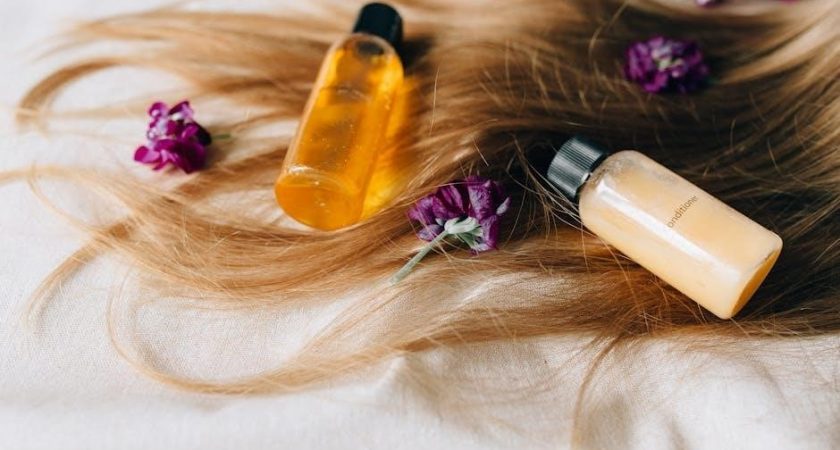Proper care for tie-dye garments ensures vibrant colors and prevents fading. Key steps include rinsing excess dye, using cold water, and avoiding harsh chemicals. Regular maintenance preserves the unique, handmade design.
Why Proper Care is Essential for Tie Dye
Proper care is crucial for preserving the vibrant colors and unique patterns of tie-dye garments. Improper washing or drying can lead to fading, uneven color distribution, and damage to the fabric. Tie-dye involves setting dyes deeply into the fabric, but excess dye residue can bleed during washing if not handled correctly. This can ruin the design and even transfer colors to other clothes. Regular maintenance ensures the longevity of the garment and maintains its artistic appeal. By following specific care routines, such as rinsing thoroughly, using cold water, and avoiding harsh chemicals, you can protect your tie-dye items from deterioration. Proper care also prevents the fabric from becoming brittle or discolored over time. Investing time in these steps guarantees that your tie-dye creations remain vibrant and intact for years to come.

Initial Care for Tie Dye
After tie-dyeing, let the garment sit for 6-8 hours to allow the dye to set. Rinse thoroughly with cold water to remove excess dye before washing. This ensures color retention and prevents bleeding.
Letting the Dye Set
Allowing the dye to set is a critical step in ensuring vibrant, long-lasting colors. After applying the dye, let the garment sit for 6-8 hours or overnight to allow the dye to fully bind with the fabric. During this time, keep the item tied in its folded or twisted shape and store it in a plastic bag to maintain moisture and prevent air exposure, which can cause uneven color distribution. Avoid unpacking or rinsing the garment too soon, as this can disrupt the dye’s bonding process. The longer the dye sets, the more intense the colors will remain. This step is essential for achieving professional-looking results and preventing excessive fading or bleeding during subsequent washes. Proper setting ensures the design stays sharp and the colors remain rich for years to come.
Rinsing Out Excess Dye
Rinsing excess dye is essential to prevent color bleeding and ensure the design stays vibrant. Start by gently rinsing the garment under cold running water until the water runs clear. This step removes loose dye particles that haven’t fully bonded to the fabric. Avoid using hot water, as it can cause the dye to fade or bleed. For best results, rinse thoroughly before untieing the fabric to prevent uneven color distribution. Some sources recommend soaking the item in a mixture of cold water and white vinegar for 30 minutes to enhance colorfastness. After rinsing, gently squeeze out excess water without wringing or twisting, as this can damage the fabric or disrupt the dye pattern. Proper rinsing sets the foundation for successful washing and long-term color retention.
Washing Tie Dye
Wash tie-dye garments separately in cold water with a mild detergent to protect colors. Avoid bleach and harsh chemicals, as they can cause fading or dye transfer to other clothes.
First Wash Instructions
The first wash is crucial for setting the colors of your tie-dye garment. Start by rinsing the item under cold running water to remove excess dye until the water runs clear. This step prevents color bleeding during the wash cycle. Once rinsed, place the tie-dye item in the washing machine separately from other clothes to avoid dye transfer; Use cold water and a mild detergent, such as Synthrapol, which is specifically designed to preserve colors and prevent fading. Avoid using bleach or harsh chemicals, as they can damage the fabric and strip the dye. After washing, check to ensure no excess dye remains before drying. Following these steps ensures your tie-dye design stays vibrant and maintains its unique, handmade appearance.
Regular Washing Routine
For regular washing, tie-dye garments should be treated with care to maintain their vibrant colors. Always wash them inside out to protect the design from friction and fading. Use cold water, as hot water can cause the dyes to bleed or fade. Opt for a mild detergent that is free from harsh chemicals, as these can damage the fabric and weaken the color bonds. Avoid using fabric softeners or bleach, as they can strip the dyes from the fabric. If hand-washing, gently agitate the water and avoid wringing or twisting the garment. When machine washing, use a gentle cycle and place the item in a mesh laundry bag for extra protection. Air-drying is recommended, but if using a dryer, set it to a low heat setting. Regular care ensures your tie-dye remains colorful and retains its unique, handmade charm.

Drying Tie Dye
Air drying is best for tie-dye to preserve colors. If using a machine, select low heat. Avoid direct sunlight to prevent fading and maintain vibrant designs.
Air Drying for Best Results
Air drying is the most recommended method for preserving the vibrant colors and integrity of tie-dye garments. This process prevents excessive heat from fading the dyes or damaging the fabric.
To air dry effectively, lay the garment flat on a clean, dry surface or hang it upside down away from direct sunlight. Avoid twisting or wringing, as this can cause colors to bleed or distort.
For delicate fabrics, reshaping the garment while damp can help maintain its original form. Ensure it dries completely in a well-ventilated area to prevent musty odors. Air drying may take longer, but it ensures the tie-dye design stays bold and intact for years to come.
Direct sunlight should be avoided, as UV rays can cause colors to fade over time. By following these steps, you can enjoy your tie-dye creations with their original vibrancy and quality preserved.
Machine Drying Tips
Machine drying can be an option for tie-dye garments, but it requires careful attention to preserve colors and fabric integrity. Always use a low heat setting to prevent dye from fading or bleeding.
Place the tie-dye item in a mesh laundry bag for added protection against friction, which can cause color loss. Avoid overloading the dryer, as this can lead to excessive abrasion and damage to the fabric.
Remove the garment while it is still slightly damp and allow it to air dry the rest of the way. This helps maintain color vibrancy and prevents shrinkage. If you must dry it completely in the machine, ensure it is on a gentle cycle with minimal heat.
Never dry tie-dye items in direct sunlight or at high temperatures, as this can cause irreversible fading. By following these tips, you can safely machine dry your tie-dye creations while keeping their colors and designs intact for a longer period.

Long-Term Maintenance
For long-term care, wash tie-dye garments inside out and in cold water to protect colors. Avoid harsh detergents or bleach, and separate tie-dye items during laundry to prevent color transfer.
Washing Inside Out
Washing your tie-dye garment inside out is a crucial step to protect the vibrant colors and unique design. This method prevents the dyes from rubbing against other fabrics, reducing the risk of fading or bleeding. Before washing, turn the garment inside out and secure it in a mesh laundry bag for extra protection. Use cold water and a mild detergent to maintain color intensity. Avoid using bleach or harsh chemicals, as they can damage the dyes and weaken the fabric. For best results, wash tie-dye items separately or with similar colors to prevent unintended dye transfer. Always check the care label for specific instructions, as some fabrics may require special handling. Regular inside-out washing ensures your tie-dye remains bold and intact for years to come. This simple practice is key to preserving the handmade beauty of your tie-dye creations.
Avoiding Harsh Chemicals
Avoiding Harsh Chemicals
Avoiding harsh chemicals is essential to preserve the vibrant colors and integrity of your tie-dye garment. Bleach, in particular, should never be used, as it can strip the dyes and damage the fabric. Instead, opt for mild, pH-neutral detergents that are gentle on colors. Synthrapol, a professional textile detergent, is highly recommended for tie-dye care, as it effectively removes excess dye without damaging the fabric. Avoid fabric softeners and dryer sheets, as they can leave residue that dulls the colors. For tough stains, spot-treat with a mild detergent or oxygen bleach, but never apply bleach directly to the dyed areas. By steering clear of harsh chemicals, you ensure your tie-dye remains colorful and vibrant for years. Always check the care label for specific recommendations tailored to your garment’s fabric and dye type.

Troubleshooting Common Issues
Tie-dye care may encounter issues like color fading or dye bleeding. To address these, start by identifying the cause. Fading can result from washing in hot water or using harsh detergents. Switch to cold water and mild detergents to minimize this. For dye bleeding, wash tie-dye items separately, especially in the initial washes, to prevent color transfer. If colors bleed, re-wash the garment in cold water with a mild detergent. For stubborn stains, gently spot-treat with a color-safe cleaner before washing. Avoid using bleach, as it can damage dyes. If your tie-dye loses vibrancy over time, consider touching up faded areas with fabric dye. Always test a small area first. By addressing these common issues promptly, you can maintain the integrity and beauty of your tie-dye creations. Regular care and attention will keep your designs looking fresh and vibrant for years.
